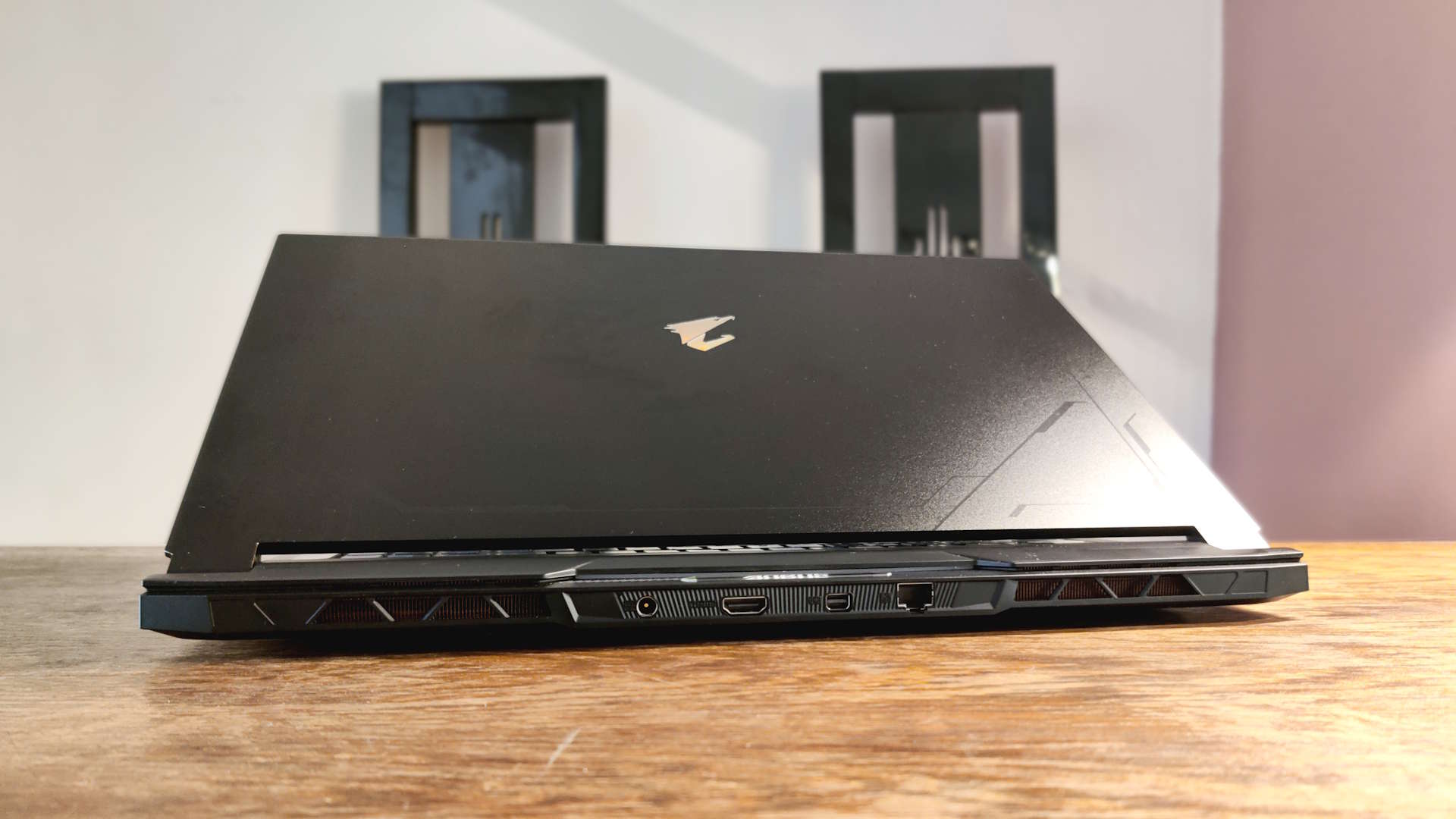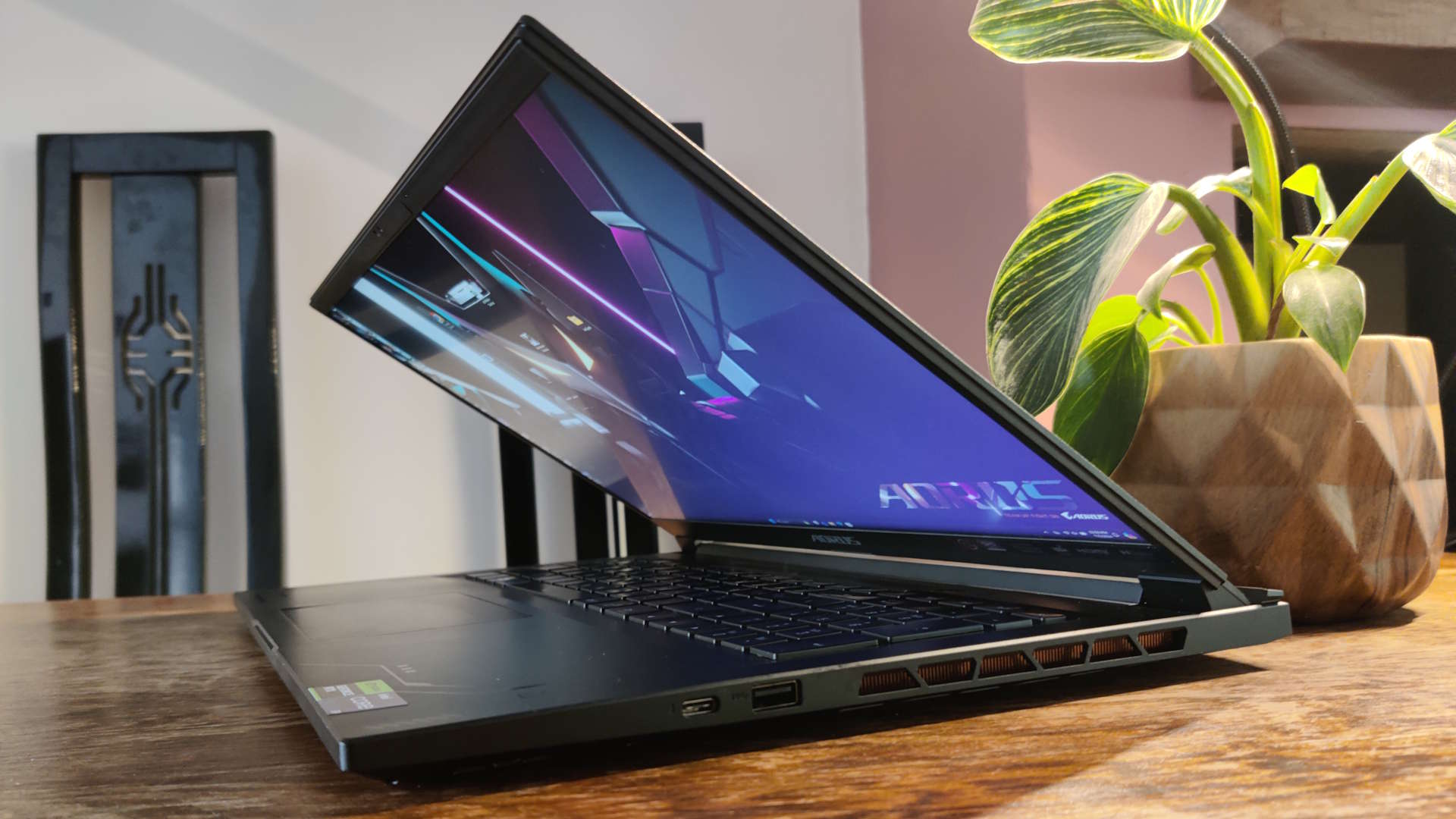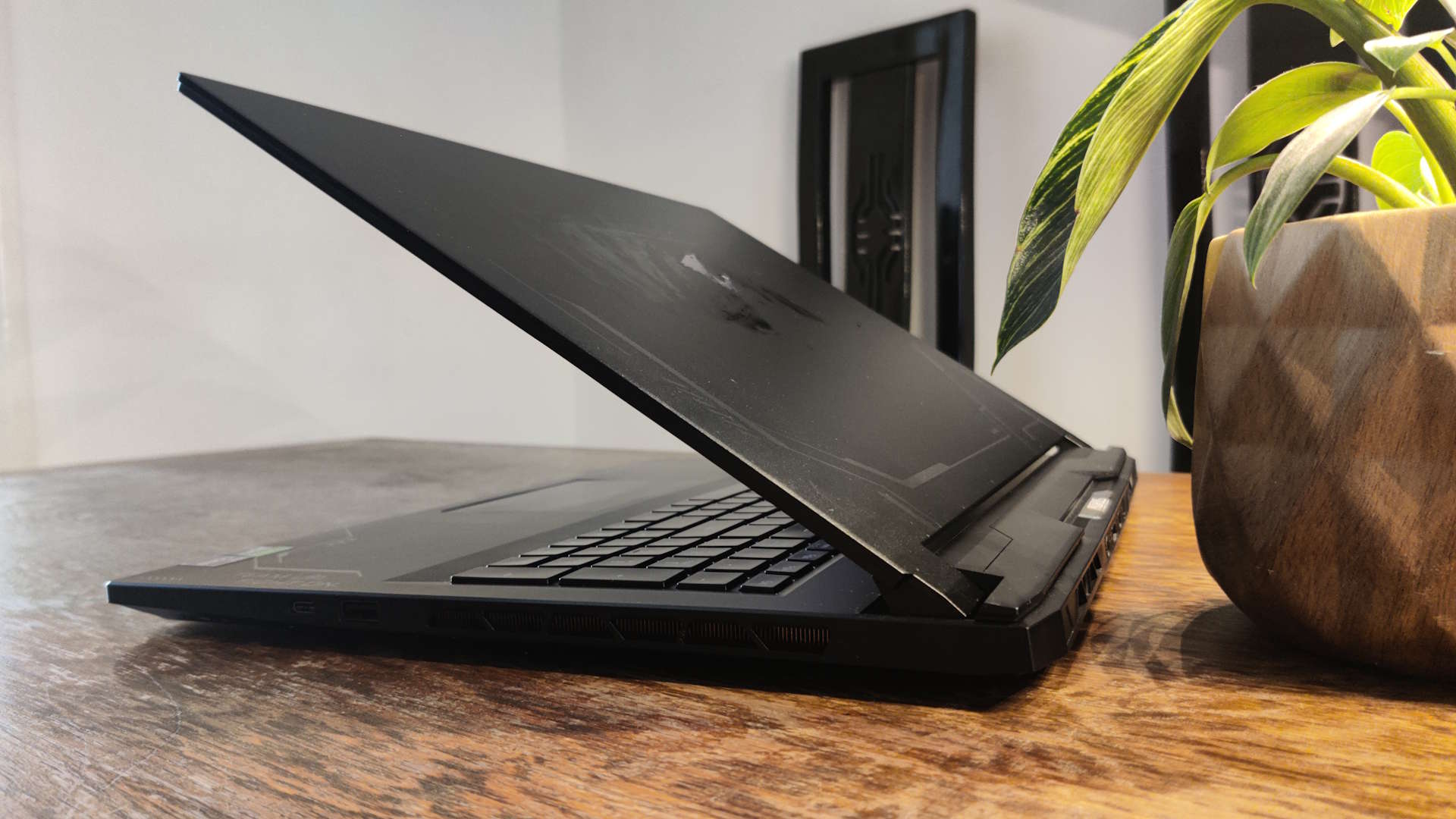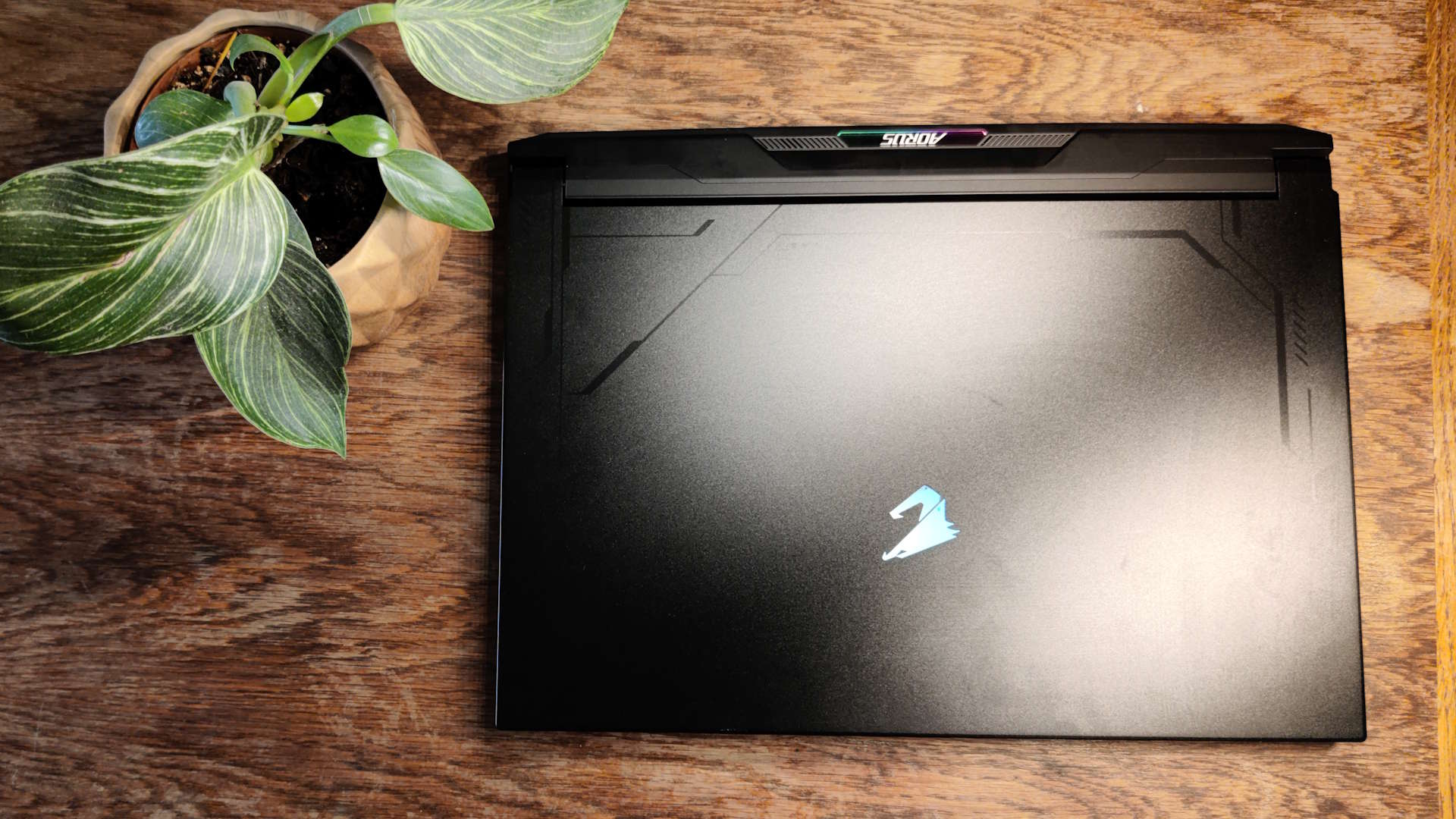Gigabyte Aorus 17X (2024) review
A 17-inch monster gaming laptop worth breaking your back over.
Gigabyte's Aorus line holds a long history of chunky, funky gaming laptops with zero chill. These aren't the kind of gaming laptops you whip out for a quick Stardew Valley session. Gigabyte Aorus machines are brutes with frame rates to match. But, as with anything where all the design focus lands on gaming power, there tend to be drawbacks. You either get a teeny-tiny NVMe drive, a sub-par monitor resolution to make up for a monster refresh rate, a camera that looks right up your nose, or a battery life shorter than Donald Trump's list of bad things he's done.
The Gigabyte Aorus 17X AZG offers oodles of speedy storage, hits the sweet spot for monitor refresh and resolution, doesn't point the camera at my double chin, and still manages to deliver great frame rates. But of course I'm going to find something to complain about.
Out of the box, it wasn't as ugly as I expected. The Aorus track record has seen me pulling out sharp-looking beasts with edgy aesthetics, but I was pleasantly surprised to see only subtle cyberpunky patterning on the back and minimal detailing where the screen meets the main body. Basically, no one's going to know it's a gaming laptop until they come up and inspect it.
The size, however, may be a bit of a giveaway. With a 17.3-inch panel topping it, the Aorus 17X weighs in at 2.9kg / 6.39lb. Meaning you really have to be committed to away gaming if you're going to lug this around and call it portable.

Model: AZG-65US665SH
CPU: Intel Core i9 14900HX
GPU: Nvidia RTX 4090 (175W)
RAM: 32GB DDR5-5600
SSD: 2x 1TB NVMe Gigabyte AG450E1024-G
Screen: 17.3-inch
Resolution: 2560 x 1440 (16:9)
Refresh rate: 240Hz
OS: Windows 11
Weight: 2.9kg | 6.39lb
Dimensions: 39.6 x 29.3 x 2.18cm | 15.6 x 11.5 x 0.86in
Price: £3,600 | $3,700
There's no mechanical keyboard weighing it down, and while I'm a little sad I'm not getting that tasty Omron feedback that the 2021 Aorus 17X YD had, the button presses on this thing have a vaguely satisfying bump… if a little squishy. I'm not enamored with the keyboard ergonomics, though. I can't count the number of times I've accidentally hit Num Lock instead of backspace or typed 1111 when I meant to press the up key. It feels unnecessarily compact considering there's an inch either side for Gigabyte to have separated that full size keyboard out a little.
Otherwise, the design and port placement isn't too bad. There's a Thunderbolt USB Type-C port sitting on the right side with up to 100W Power Delivery, which doubles as a 1.4 DisplayPort. Sadly it's the only Type-C port here, but there are three UBS Type-A 3.2 ports dotted along the sides with 20 Gbps data transfers. It's a step down from the number of ports the old models had, but more than enough for everyday use.
Benchmark-wise, there's hardly a thing to complain about. We're talking rip roaring rendering performance, with stunning single core numbers in Cinebench R23; great load times on those NVMe drives; and lovely low max GPU temps as it smashes through our gaming ringer. And it does all this without piercing your eardrums with high-pitched cooling. But how does it stand up against gaming laptops of a similar calibre?
For around the same amount of cash in the US—more for the UK, again (so unfair)—you could nab the Asus ROG G16 Zephyrus. Sure, the 16 core, 22 thread Intel Core Ultra 9 185H, and super slim chassis give it the advantage for everyday use, but the 115W RTX 4090 holds the Asus notebook back as gaming benchmarks go. So of course as hardcore gamers we're going to lean toward the Aorus. Go a little larger with the Strix Scar 17 (also cheaper than the Aorus in the US) and while you may be fighting against noisy cooling, sub-par battery life and a bad trackpad, it absolutely wastes the Aorus 17X in gaming benchmarks. Still, I'd take the Aorus' quiet wins over the Strix Scar's unnecessarily power-hungry performance.






✅ You're in the UK: The stiffest competition—the Lenovo Legion 9i—is £350 more for us here in the UK. If that's not a reason to consider this machine with slightly lower FPS, I don't know what is.
✅ You actually want to game unplugged: This is a gaming laptop that I can actually call portable since you can use it unplugged for a good hour and 20 minutes. That's far longer than most gaming laptops we've tested recently.
❌ You need crisp 4K visuals: Gamers who are also movie buffs, or do high-fidelity design work on the go, might consider the Lenovo Legion 9i instead as it comes with a much more impressive panel.
❌ You need a lot of USB Type-C ports: The Aorus 17X only comes with a single one, and for those with no dock to split that 100 watts for charging several peripherals, you might want to consider something with more ports.
Alternatively, you've got the New Razer Blade 16 packing a same-wattage RTX 4090, but backed up with a previous generation CPU. It's a stunning machine with a fancy 1440p OLED panel, but it runs a lot hotter and manages far fewer frames than the Aorus 17X, especially in games that rely heavily on the CPU. With Razer asking for $600 more than Gigabyte, it's certainly worth considering the 17X in a straight toss-up here.
But the real competition among portable gaming heavyweights is thin (pun very much intended). It's the smaller, slimmer Lenovo Legion 9i that really gives the Aorus 17X a run for its money. With its glorious 4K mini LED screen and superb keyboard, it comes in at around the same price as the Aorus 17X and pushes past it in almost all of our gaming benches. The Legion 9i is a little more expensive for UK peeps, so it's a lot easier to recommend the Aorus 17X to residents of old Blightey. But then, when you can push those pixels even at a crisp 4K, the Lenovo starts to look real tasty.
As much as there are a few issues with this Aorus 17X, Gigabyte has managed to deliver a gloriously subtle machine built to be sturdy, both physically and in terms of gaming prowess. Sure it's lacking a USB Type-C port or two, and the squishy keyboard is a little disappointing, but this really is a portable powerhouse. For a little less cash than the competition, a superb battery life, and a monitor that hits the resolution/refresh rate sweet spot, I'd sacrifice a few fps.
